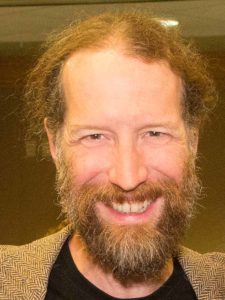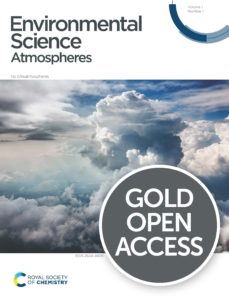Professor Nønne Prisle joins the Associate Editor team
Welcome to Environmental Science: Atmospheres!
We are delighted to welcome Professor Nønne Prisle, University of Oulu, Finland, as a new Associate Editor for Environmental Science: Atmospheres.
“In atmospheric science, the intersection between complexity, discovery and society’s grand challenges is very clear, which makes it so fascinating and humbling at the same time.”
Nønne is an Associate Professor in atmospheric science and leads the Atmospheric Research (ATMOS) group at University of Oulu. She has a BSc in physics from University of Southern Denmark, a PhD in chemistry from University of Copenhagen and has been a postdoctoral fellow at the Finnish Meteorological Institute, Helsinki University’s Institute for Atmospheric Research (INAR) and Georgia Institute of Technology School of Earth and Atmospheric Sciences. Her research interests are atmospheric chemistry, air quality and climate with focus on aerosol and surface thermodynamics, cloud microphysics, multiphase systems modelling and applications of imaging and spectroscopic methods. She currently holds a European Research Council grant (2016) and an Academy of Finland Research Fellowship (2017) and received the 2020 Aerosologist Award of the Nordic Society for Aerosol Research. She is vice-chair of the board of Finnish Synchrotron Radiation Users Organization, board member of the Finnish Association for Aerosol Research and spokesperson for atmospheric research at the Finnish-Estonian Beamline for Atmospheric and Materials Science at the MAX IV synchrotron facility. She is a speaker of TEDxOulu – Arctic Matters (2020) and co-contributor to the podcast Exploring Brilliant Science and the graphic novel “Little Things” about her research.
Read some of Nønne’s recent papers below.
SO2 formation and peroxy radical isomerization in the atmospheric reaction of OH radicals with dimethyl disulfide
Torsten Berndt, Jing Chen, Kristian H. Møller, Noora Hyttinen, Nønne L. Prisle, Andreas Tilgner, Erik H. Hoffmann, Hartmut Herrmann and Henrik G. Kjaergaard
Chem. Commun., 2020, 56, 13634-13637
Effects of surface tension time-evolution for CCN activation of a complex organic surfactant
Jack J. Lin, Thomas B. Kristensen, Silvia M. Calderón, Jussi Malila and Nønne L. Prisle
Environ. Sci.: Processes Impacts, 2020, 22, 271-284
Shifted equilibria of organic acids and bases in the aqueous surface region
Josephina Werner, Ingmar Persson, Olle Björneholm, Delphine Kawecki, Clara-Magdalena Saak, Marie-Madeleine Walz, Victor Ekholm, Isaak Unger, Corina Valtl, Carl Caleman, Gunnar Öhrwall and Nønne L. Prisle
Phys. Chem. Chem. Phys., 2018, 20, 23281-23293
Please join us in welcoming Professor Prisle to Environmental Science: Atmospheres.
Best wishes,
Dr Anna Rulka
Executive Editor, Environmental Science: Atmospheres










